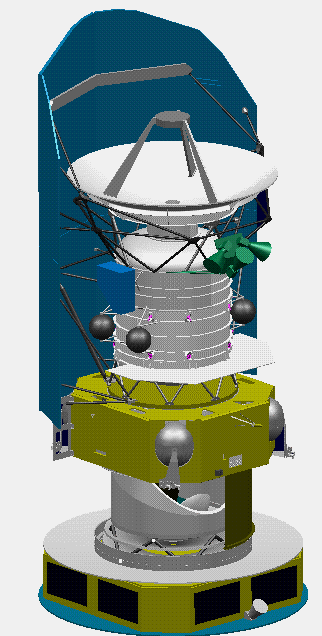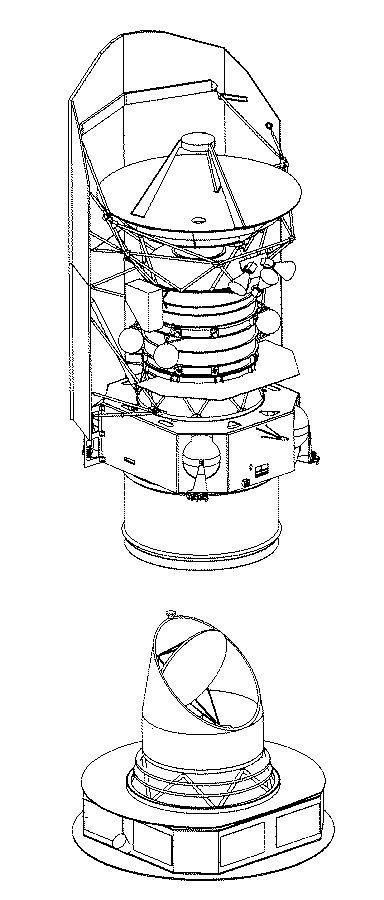

Planck is the third Medium-Sized Mission (M3) of ESA's Horizon 2000 Scientific Programme. It is designed to image the anisotropies of the Cosmic Background Radiation Field over the whole sky, with unprecedented sensitivity and angular resolution. Planck will provide a major source of information relevant to several cosmological and astrophysical issues, such as testing theories of the early universe and the origin of cosmic structure.
Planck was formerly called COBRAS/SAMBA. After the mission was selected and approved, it was renamed in honor of the German scientist Max Planck (1858-1947), Nobel Prize for Physics in 1918.
Budgetary pressures within ESA's scientific programme have forced a reconsideration of the original implementation plan for Planck. Recently several studies were carried out to determine how Planck will be implemented. The preferred option is to launch Planck together with the FIRST (Far InfraRed and Submillimetre Telescope) mission; in this solution (which is often referred to as the "Carrier" because of the launch configuration), both Planck and FIRST will be placed in orbit around the second Lagrangian point of the Earth-Sun System. Other options which have been considered in the recent past are the "Merger" (i.e. to put both payloads on a single bus and operate them sequentially), and the "Stand-alone" (in which Planck and FIRST are launched independently at different times).
Further informations about this issue are available in this URL.
Red notes are my opinions. My focuses on judgements
are:
FEASIBLE ? (= Can it complete observation successfully ?)
, or REASONABLE
? (= How much does it cost ?)
CARRIER


This solution is called "Carrier".
Planck and FIRST are launched together, then separate and proceed to
different orbits.
I think this solution is feasible (relatively
cheap), reasonable (can complete observation successfully), and best one.
This solution is called "Merger".
Planck and FIRST are launched together, then work together as a single
spacecraft.
I think this solution has many serious problems
for successful observations..., so that it seems not to be reasonable (can't
complete observation successfully).
This solution is called "Stand-Alone".
Planck and FIRST are launched separately, then operated respectively.
These missions are carried out within reduced cost envelope.
I think this solution seems not to be feasible
(expensive).